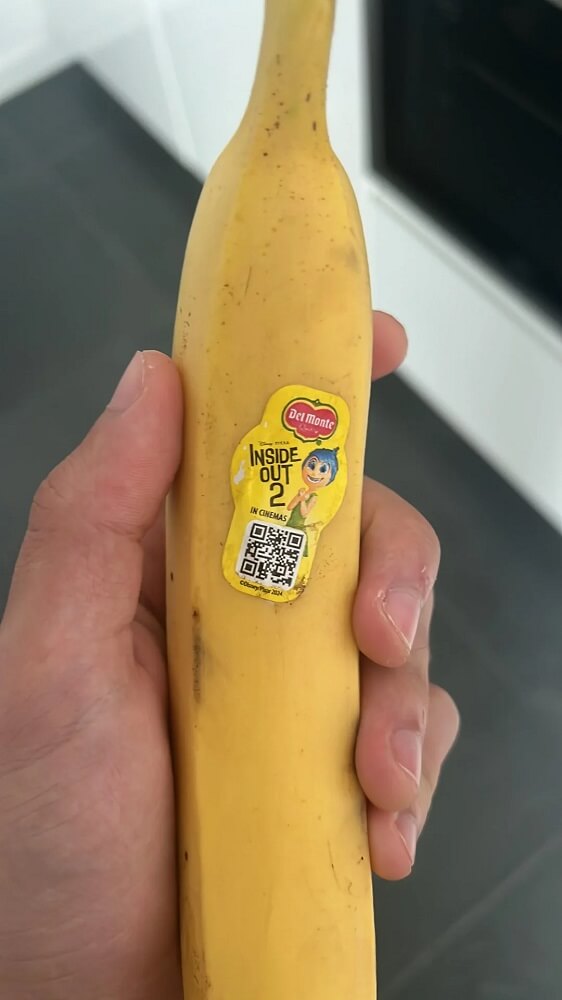One Redditor on r/LateStageCapitalism shared an unexpected place where brands have started placing their ads: brand logo stickers on fruits.
"Advertisement on a f****** banana," the original poster wrote in the title.

The photo shows a single yellow banana with the usual brand logo sticker you would find on fruits sold in the market — except the sticker also features an ad promoting the Pixar movie "Inside Out 2."
The banana sticker adds to the growing problem of ad saturation. According to the University of Southern California, the average person sees roughly 5,000 ads daily.
Advertisements can now appear in the most unlikely places, from inside fortune cookies to floating ocean ads that block sunset views.
Ads often nudge people to buy things they don't need. This excessive consumption increases demand for production, leading to more waste that worsens landfills and contributes to global warming, according to Greenly.
Save $10,000 on solar panels without even sharing your phone number Want to go solar but not sure who to trust? EnergySage has your back with free and transparent quotes from fully vetted providers that can help you save as much as $10k on installation. To get started, just answer a few questions about your home — no phone number required. Within a day or two, EnergySage will email you the best local options for your needs, and their expert advisers can help you compare quotes and pick a winner. |
According to the United Nations Environment Programme, the fashion industry alone produces 2% to 8% of harmful carbon pollution.
Even food can greatly contribute to overfilling landfills. In the U.S., 145 billion meals' worth of food ends up in landfills, according to Feeding America. This is often due to overbuying food, per ReFED, or marketing strategies that encourage people to buy more than they can realistically consume, according to one study.
The decomposition of organic materials such as food produces waste gas as a by-product, according to the Environmental Protection Agency. This gas is composed of about 50% methane, which contributes to the overheating of the planet.
While most have accepted that getting bombarded with advertisements or unnecessary packaging is part of the norm, some are pushing back against the mindset that new is always better. For instance, others try to reduce waste by shopping secondhand or thrifting.
TCD Picks » Upway Spotlight
💡Upway makes it easy to find discounts of up to 60% on premium e-bike brands
|
Should grocery stores donate food that's past its sell-by date?
Click your choice to see results and speak your mind. |
Online communities such as "buy nothing" groups connect people who want to trade items or services for free. Giving away unwanted goods instead of throwing them away helps keep items out of landfills.
The banana sticker sparked outrage and disappointment among commenters.
"This is getting a little much," a Redditor wrote.
One user poked fun at the idea of a company using even a banana for ad placement by commenting: "Every single square inch is potential advertising space!"
Another pointed out that using fruits as ad spaces isn't a new concept: "Disney been branding fruit for years. Star wars oranges is fun to say, but soul crushing to see."
Join our free newsletter for good news and useful tips, and don't miss this cool list of easy ways to help yourself while helping the planet.















